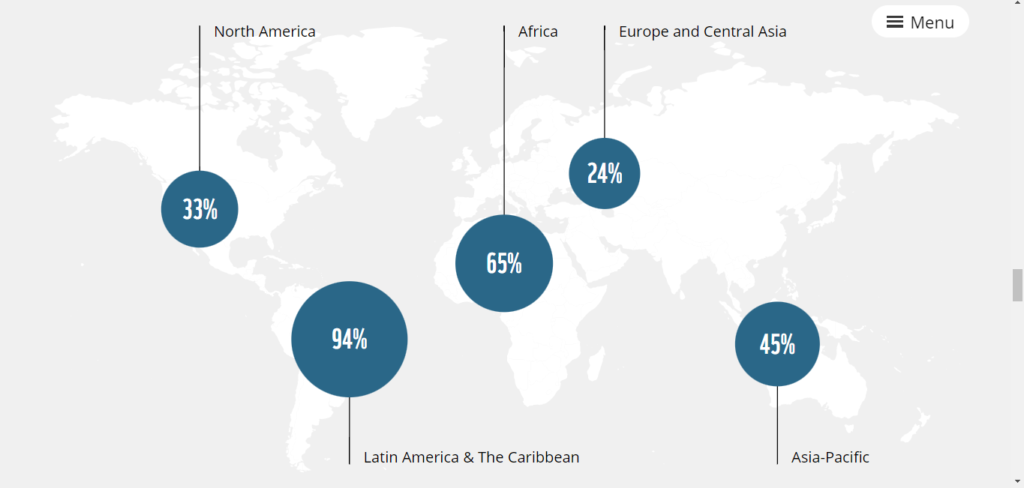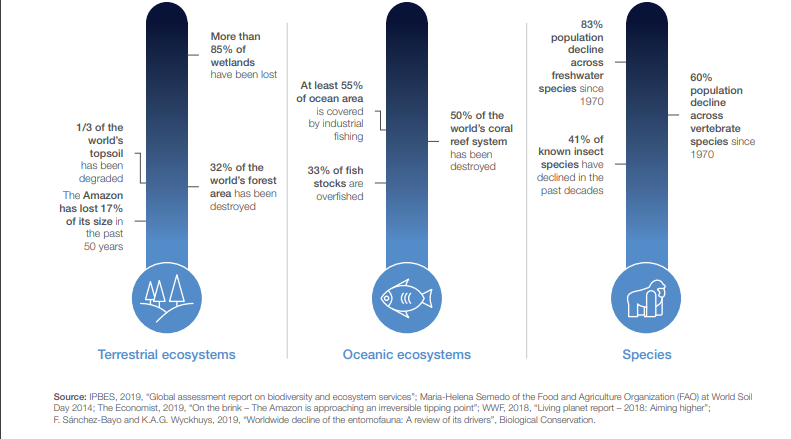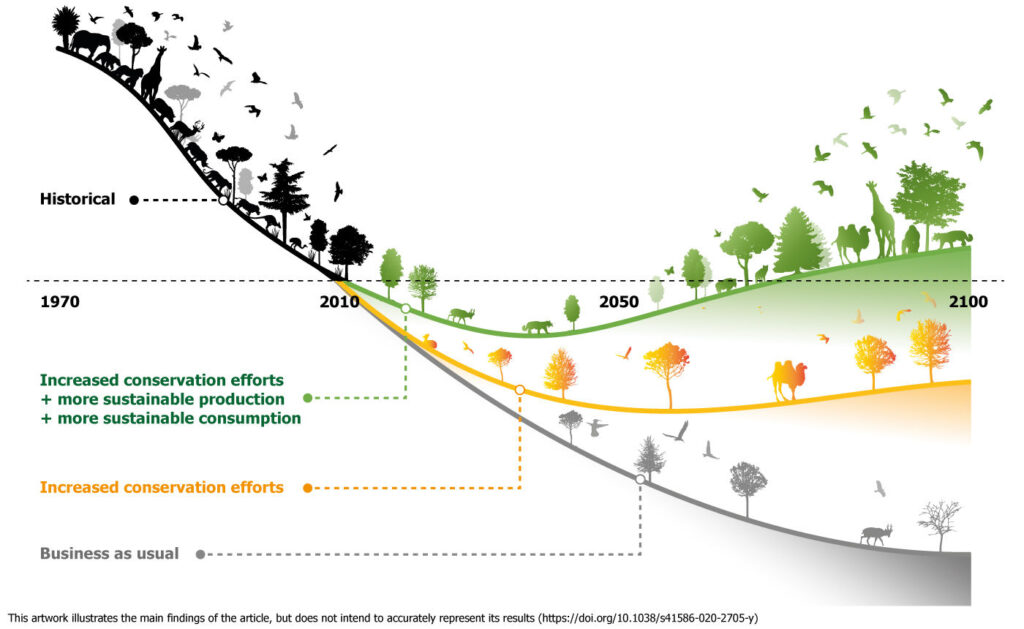What Is Biodiversity and Why Is It So Important?
Every species on the planet plays a crucial role in maintaining the balance of life on Earth. This article will explain the role of biodiversity and how vital it is to our world.
Key Takeaways
- Biodiversity explained (more…)
- Biodiversity promotes a healthy environment (more…)
- Biodiversity supports the economy and human health (more…)
- Declining biodiversity accelerates climate change (more…)
- Biodiversity loss is an alarming problem (more…)
- Keeping our world alive through biodiversity conservation (more…)
What Exactly Is Biodiversity?
Biodiversity refers to the variety of life that may be found in a given place. It includes animals, plants, fungi, and even microbes such as bacteria. Each of these species collaborates in ecosystems to preserve balance and support life.
Biodiversity: Vital for the Environment
Healthy biodiversity promotes a healthy environment, and a healthy environment provides enough resources for life forms to survive and thrive. Here is how biodiversity keeps the environment healthy:
Soil
The soil itself is biologically diverse, and includes different kinds of insects, nematodes, bacteria, and other microorganisms that improve the condition of the soil. Biodiversity is a crucial part of soil health. For example, according to the USDA, soil biodiversity is vital in nutrient cycling, which helps plants and crops by absorbing minerals from the soil. Without biodiversity, soil can turn into dry dirt, resulting in erosion and desertification.
Air
Plants and trees purify the air we breathe. Having a healthy, diverse set of trees helps to maintain clean air. For example, healthy trees in cities can help to reduce air pollution significantly, with the majority of pollutants eliminated through leaf stomata.
Water
Biodiversity in water organisms, such as algae, improves water quality. A 2011 study shows that nitrates are eliminated up to 4.5 times quicker in streams with eight different species of algae than in streams with only one species. The more biologically diverse the waterways are, the cleaner they will be.
Biodiversity: Vital for the Economy and Human Health
The economy and health are two vital factors for a country’s success. Here’s how biodiversity impacts these two factors.
Economy
Around US$44 trillion of economic value generation, which is more than half of global GDP, depends on natural resources or services. Industries such as construction, agriculture, and food and beverages are the three largest industries that rely on nature’s biodiversity.
More than 70 percent of people living in poverty depend on natural resources to earn a living through activities such as farming, fishing, and forestry.
Plant biodiversity is particularly crucial to farming, as biodiversity in crops not only helps improve soil health, but it helps increase crop yields. The graphic below illustrates how industrialized farming kills soil biodiversity, resulting in greater and wider biodiversity loss and harming the environment’s natural condition. One solution is to implement regenerative agricultural practices, which promote biodiversity through the use of cover crops (plants grown around cash crops) and more diverse cash crops.
Learn more: What Is Regenerative Agriculture?

Source: Maggie Eileen Lochtenberg: Kiss The Ground
Health
Healthy biodiversity develops a healthy community. Rainforest plants provide 25% of the substances used in modern medicine, and about 70% of cancer drugs are naturally-sourced, or are synthetic but inspired by nature.
Biodiversity loss is also linked to higher rates of zoonotic disease, although this concept is controversial. Some researchers argue that biodiversity actually increases zoonotic disease, because there are more animals, and thus, more diseases. However, others, such as a 2021 PNAS study, argue that biodiversity loss typically targets animals that are less likely to carry disease to humans, and results in an increase in smaller species that are more likely to carry disease.
Healthy biodiversity as a result of protected natural areas has also been related to fewer cases of diseases like malaria and Lyme disease.
Biodiversity: Vital for Fighting a Changing Climate
The less biodiversity there is, the warmer the climate will be. As we have already seen, climate change leads to many far-reaching problems such as hurricanes, rising sea levels, floods, droughts, shortage of water supplies, reduced food security, damaged coastlines, and weakened infrastructural resilience.
Biodiversity is an important tool in fighting the negative effects of climate change. For example, biodiversity-rich habitats can remove carbon dioxide from the atmosphere, acting as carbon stores. Conserving certain types of plants (and thus conserving biodiversity) is also helpful in mitigating the negative impacts of climate change. For example, conservation of flood-resistant plants like mangroves help reduce the impacts of climate-caused flooding and storm surges.
Climate change also causes biodiversity loss. Changes in climate are mostly due to human activities and changing the way land is used. Converting natural regions into urbanized cities or industrialized agricultural fields will not only reduce biodiversity but also has the potential to accelerate global warming by removing trees and plants that serve to cool the environment.
Biodiversity Loss: An Alarming Problem
The biodiversity of the planet has decreased severely over the last several decades. The image below shows the percentage of declining biodiversity by region around the globe.

- North America has lost 33% of its biodiversity, although biodiversity loss has slowed in the 2000s.
- Africa lost an average of 65% of its biodiversity between 1970 and 2016.
- Europe and Central Asia have lost an average of 24% of their biodiversity between 1970 and 2016.
- The Asian Pacific region has lost biodiversity by an average of 45%. Pollution is one of the main causes of the decline.
- Latin America and the Caribbean have experienced a devastating average of a 94% decline in biodiversity. This is due to a range of factors, including the conversion of grasslands, savannas, forests, and wetlands, the overexploitation of species, climate change, and the introduction of alien species.
According to the World Economic Forum’s 2020 report, human activities have drastically changed 75% of the planet’s terrestrial areas and 66% of marine ecosystems. Due to these changes, humans have endangered around 25% of identified plant and animal species and globally, ecosystems have shrunk by 47% in size and condition. The graph below shows the impact of human activity on the world’s ecosystems.

Biodiversity Conservation: Keeping Our World Alive
Biodiversity loss can be halted and reversed if our conservation action is strengthened. Here are six key actions a 2020 study identified as requirements to reverse the trend of biodiversity loss:
- Increasing crop yields in a sustainable way
- Reducing barriers to trade and increasing trade in agricultural goods
- Reducing overall agricultural waste by 50%
- Reducing the number of meat calories in human diets by 50%
- Extending protected areas to cover 40% of the terrestrial area, including critical biodiversity sites, and improving management.
- Increasing restoration and landscape-level conservation strategies on all managed land to balance production and conservation aims.
In addition to the list above, there are more ways to protect our biodiversity and keep our world alive. Here are some of them:
Government Regulations
The implementation of government regulations and policies that preserve natural ecosystems by prohibiting unsustainable development, overexploitation of natural resources, or other forms of human activities will help preserve biodiversity.
Reduction of Invasive Species Populations
Biodiversity can be preserved by reducing the number of invasive species that are accidentally transported through shipping or other human activities. Traveling cargos must be carefully inspected before being offloaded in a new area.
Additionally, people should not introduce new kinds of animals or plants into an area without first speaking with ecologists who are familiar with the place.
Seed Banks and Breeding In Captivity
If a plant species become extinct in the wild, seed banking provides a backup plan where the plant may be developed from a saved seed and restored into its natural environment.
Breeding animals in captivity also opens the opportunity to increase the population of the endangered species so that they can then be released into the wild to help restore endangered populations.
Support Sustainable Products
Human consumption of natural resources is one of the leading factors of biodiversity loss, which is why it is critical to choose products that are produced in a sustainable manner. Fair Trade items are an excellent marker of sustainably produced products.
The image below illustrates how conservation might potentially halt and reverse biodiversity loss by 2050, if done correctly.

